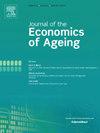When the abundance ends: Economic transformation, population aging, and shrinking lifecycle surplus in China
IF 2
3区 经济学
Q2 DEMOGRAPHY
引用次数: 0
Abstract
China’s age of abundance, driven by rapid increases in labor income and a favorable population age profile, generated a sizable surplus of historical proportions. Using the National Transfer Accounts (NTA) approach, this study updates results published in this journal a decade ago. It traces changes in labor income and consumption patterns in China in the 2010s, and compares them with those in the decade prior. Our results report significant shifts in income and consumption patterns over the two decades. With economic growth and income increase slowing down, and consumption growth increasing faster than income growth in the second decade of the twenty-first century, the sizable national total of the lifecycle surplus observed in the decade earlier shrank sharply in the 2010s. A decomposition analysis reveals that while the vast majority of shrinking in the national total of the lifecycle surplus is attributable to shifts in income and consumption profiles, demographic changes also played a substantial role. As China exits its age of abundance and as its population ages at an accelerating pace, the national total of lifecycle surplus that came with this age is also quickly diminishing. Our projection exercises show that, combined, the new economic lifecycle patterns and population aging could deplete China’s lifecycle surplus with a decade’s time, a change that poses unforeseen challenges to policymakers and the public alike in China.
当丰裕结束:中国的经济转型、人口老龄化和生命周期剩余缩减
在劳动收入快速增长和有利的人口年龄结构的推动下,中国进入了丰裕时代,产生了历史上规模相当大的过剩。使用国家转移账户(NTA)方法,这项研究更新了十年前发表在该杂志上的结果。它追踪了2010年代中国劳动收入和消费模式的变化,并将其与此前10年的变化进行了比较。我们的研究结果显示,在过去20年里,收入和消费模式发生了重大变化。随着经济增长和收入增长放缓,以及21世纪第二个十年消费增长快于收入增长,前十年观察到的庞大的全国生命周期剩余总量在2010年代急剧萎缩。一项分解分析显示,虽然全国生命周期剩余总量的绝大部分萎缩是由于收入和消费状况的变化,但人口结构的变化也起了重要作用。随着中国走出富庶时代,随着人口加速老龄化,这个时代带来的全国生命周期剩余总量也在迅速减少。我们的预测表明,新的经济生命周期模式和人口老龄化相结合,可能会在十年内耗尽中国的生命周期盈余,这一变化对中国的政策制定者和公众都构成了不可预见的挑战。
本文章由计算机程序翻译,如有差异,请以英文原文为准。
求助全文
约1分钟内获得全文
求助全文
来源期刊

Journal of the Economics of Ageing
Multiple-
CiteScore
4.10
自引率
4.50%
发文量
46
审稿时长
49 days
期刊介绍:
The Journal of the Economics of Ageing (JEoA) is an international academic journal that publishes original theoretical and empirical research dealing with the interaction between demographic change and the economy. JEoA encompasses both microeconomic and macroeconomic perspectives and offers a platform for the discussion of topics including labour, health, and family economics, social security, income distribution, social mobility, immigration, productivity, structural change, economic growth and development. JEoA also solicits papers that have a policy focus.
 求助内容:
求助内容: 应助结果提醒方式:
应助结果提醒方式:


